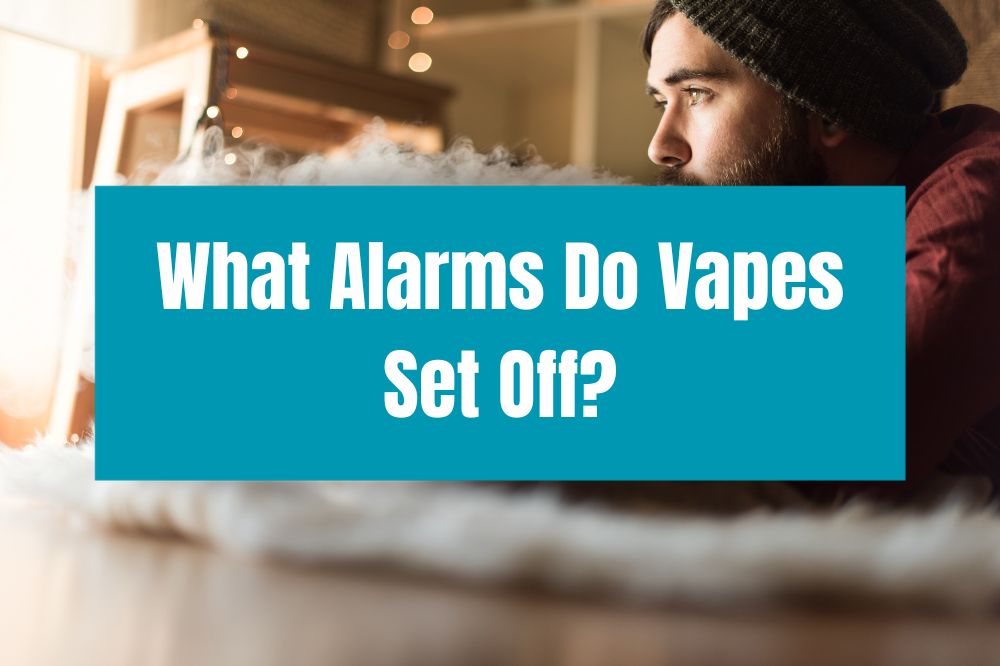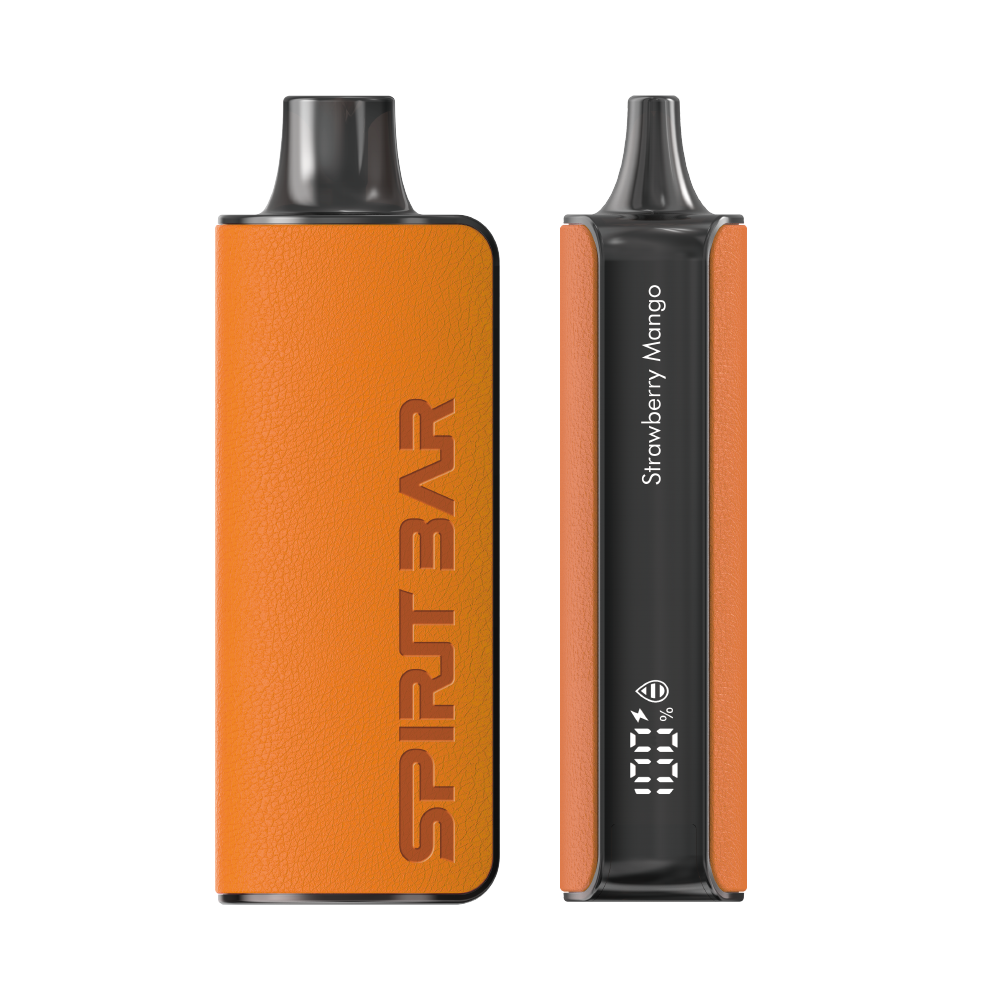What Alarms Do Vapes Set Off?

Are you a vaper who’s concerned about setting off smoke alarms? You’re not alone. Many vapers worry that their devices might trigger fire alarms and cause a disturbance. In this article, we’ll explore what alarms vapes can set off and what you can do to avoid setting them off.
Vaping is likely to set off ionisation, optical, and multi-sensor alarms, but is unlikely to set off a heat detector. Ionisation alarms are triggered when particles disrupt the internal mechanism, and vapor could trigger the alarm, although this is unlikely. An optical alarm is the most likely to be triggered by vapor. It reacts when smoke enters its system, interrupting the internal infrared light. Multi-sensor alarms use a combination of sensors to detect different types of fires, including smoke, heat, and carbon monoxide. These alarms are sensitive to vapor and could also be set off by vaping.
Understanding Vapes
If you are new to vaping, it is important to understand how it works. Vaping involves heating a liquid (also known as e-juice or vape juice) to produce a vapor that is inhaled. The liquid is usually made up of a combination of propylene glycol, vegetable glycerin, flavorings, and nicotine (although not all e-juices contain nicotine).
One key difference between vaping and smoking is that vaping produces vapor, not smoke. Smoke is produced when a material is burned, and it contains a variety of harmful chemicals. Vaping, on the other hand, produces vapor that is generally considered to be less harmful than smoke.
However, it is important to note that not all smoke alarms will be triggered by vaping, as some are specifically designed to detect only smoke particles and not vapor. Smoke alarms are generally designed to detect tiny particles of burning, and depending on the sensitivity of the notice, vapes can set off fire alarms.
SPIRITBAR Katana BP10000
- Slender, leather-textured body reminiscent of a katana handle for an authentic samurai feel
- Unique samurai-inspired e-liquid flavor - fruity yet not too sweet, with a luxurious, elegant aroma
- Powerful 650mAh rechargeable battery for extended vaping time
- Large 18ml e-liquid capacity and 10,000 puff capacity
- Advanced mesh coil and e-liquid & power display screens for optimal vaping experience
The special juice captures the essence of the samurai spirit with its rich, smoothly pulsating flavor that brings new satisfaction with every puff. The device's slender, leather-textured design evokes the grip of a samurai's katana, making this product a perfect choice for beginner vapors.
There are four main types of smoke detectors: ionization, optical, multi-sensor, and heat. Vaping is likely to set off ionization, optical, and multi-sensor alarms, but is unlikely to set off a heat detector. Heat detectors (or heat alarms) are a type of fire alarm often used in kitchens and bathrooms, as they’re designed to detect high temperatures rather than smoke or vapor.
Overall, it is important to be aware of the potential for vapes to set off smoke alarms and to take steps to minimize the risk. Blowing vapor down and away from the detector can help keep it from ever reaching the alarms, which are usually placed on ceilings. Additionally, some smoke alarms may be less sensitive to vapor than others, so it is worth checking the specific model of your smoke alarm to see how it is designed to function.
Types of Alarms
When it comes to vapes and smoke alarms, there are different types of alarms to consider. Here are the three main types of alarms and how they might be affected by vaping:
1. Optical Alarms
Optical alarms work by beaming infrared light and detecting when smoke particles scatter the light onto a light detector, triggering the alarm. Vaping can set off optical alarms if the vapor is thick enough.
2. Ionisation Alarms
Ionisation alarms work by using a small amount of radioactive material to detect smoke particles. While vaping may set off ionisation alarms, they are less sensitive to vapor than optical alarms.
SPIRITBAR Jack’s Flask 9000 Puffs
- Stylish pirate flask-shaped body providing an exciting vaping experience
- Delivering up to 9000 puffs per device
- 20ml e-liquid capacity with 50mg nicotine strength for satisfying throat hit
- Specialized pirate-themed e-juice flavors for rich, swirling taste
- Premium mesh coil optimizes flavor profile for maximum vaping enjoyment
This disposable vape captures the daring spirit of the high seas with its flask styling and signature pirate e-juice flavors. The extraordinary battery life provides 9000 indulgent puffs for extended vaping pleasure. Live boldly and freely with the Jack's Flask - a legendary vaping experience fit for a pirate's adventures.
3. Heat Alarms
Heat alarms, also known as rate-of-rise detectors, are triggered by sudden increases in temperature rather than smoke particles. Vaping is unlikely to set off heat alarms, as they are designed to detect heat and not smoke or vapor.
It’s important to note that not all smoke alarms will be triggered by vaping. Some alarms are specifically designed to detect only smoke particles and not vapor. If you’re a vaper, it’s a good idea to check what type of smoke alarm you have in your home and consider installing a smoke alarm that is less sensitive to vapor.
Smoke Alarms and Vapes
When it comes to vaping indoors, one of the biggest concerns is whether or not your vape will set off a smoke alarm. The answer is that it depends on the type of smoke alarm you have. In this section, we’ll explore the two main types of smoke alarms and how they react to vaping.
Ionization Smoke Alarms
Ionization smoke alarms are the most common type of smoke alarm. They work by detecting small particles of smoke that are produced by fast-burning fires. Unfortunately, they can also be set off by vaping. This is because the particles produced by vaping are similar in size and composition to those produced by fast-burning fires.
If you have an ionization smoke alarm and you vape indoors, you may want to consider switching to a photoelectric smoke alarm instead. These alarms are less likely to be triggered by vaping.
Photoelectric Smoke Alarms
Photoelectric smoke alarms work differently than ionization smoke alarms. They use a beam of light to detect smoke particles in the air. When smoke enters the chamber, it scatters the light beam and triggers the alarm.
While photoelectric smoke alarms are less likely to be triggered by vaping than ionization smoke alarms, they can still be set off if you exhale a large amount of vapor directly into the alarm.
To avoid setting off your smoke alarm while vaping, it’s best to blow your vapor away from the alarm and towards a window or area with good ventilation. You can also choose a device that produces less vapor, such as a pod system with adjustable airflow. Taking shorter and controlled drags can also minimize the amount of vapor produced.
In summary, if you vape indoors, it’s important to be aware of the type of smoke alarm you have and how it reacts to vaping. While both ionization and photoelectric smoke alarms can be set off by vaping, photoelectric smoke alarms are generally less sensitive to vapor. By taking a few simple precautions, you can enjoy your vape without setting off your smoke alarm.
Heat Alarms and Vapes
Heat alarms, also known as rate-of-rise detectors, are triggered by sudden increases in temperature rather than smoke particles. These alarms are typically installed in kitchens and bathrooms, where cooking fumes and steam could trigger smoke alarms. Heat alarms are less sensitive to smoke and vapor, making them less likely to be set off by vaping.
SPIRITBAR Katana BP10000
- Slender, leather-textured body reminiscent of a katana handle for an authentic samurai feel
- Unique samurai-inspired e-liquid flavor - fruity yet not too sweet, with a luxurious, elegant aroma
- Powerful 650mAh rechargeable battery for extended vaping time
- Large 18ml e-liquid capacity and 10,000 puff capacity
- Advanced mesh coil and e-liquid & power display screens for optimal vaping experience
The special juice captures the essence of the samurai spirit with its rich, smoothly pulsating flavor that brings new satisfaction with every puff. The device's slender, leather-textured design evokes the grip of a samurai's katana, making this product a perfect choice for beginner vapors.
However, it is important to note that some heat alarms may still be triggered by vaping if the vapor is close enough to the alarm and the temperature of the vapor is high enough. In addition, some heat alarms may be more sensitive than others, so it is important to check the manufacturer’s instructions to determine the sensitivity of your heat alarm.
To avoid setting off a heat alarm with your vape, it is recommended that you keep your vapor away from the heat alarm and use a fan or open a window to help dissipate the vapor. It is also important to keep your vape clean and well-maintained to prevent any leaks or malfunctions that could generate excess heat.
In summary, heat alarms are less likely to be set off by vaping than smoke alarms, but it is still possible under certain circumstances. To minimize the risk of setting off a heat alarm with your vape, it is important to keep your vapor away from the alarm and maintain your vape properly.
Carbon Monoxide Alarms and Vapes
When it comes to carbon monoxide (CO) alarms, there is often confusion about whether or not vaping can set them off. While vaping does not produce carbon monoxide, it is possible for some CO alarms to be triggered by other gases that are present in vapor.
According to The Comfort Academy, some cheaply made carbon monoxide alarms can be triggered by gases such as hydrogen gas, hydrogen sulfide, hydrogen cyanide, petrol fumes, vapors of ethyl, methyl, and isopropyl alcohol, acetylene, dimethyl sulfide, and nitrogen dioxide. While these gases are not present in all types of vapor, it is possible for them to be present in some types of e-liquid or in the vapor produced by certain types of devices.
It is important to note that not all CO alarms are the same. Some alarms are designed to detect only carbon monoxide, while others are combination sensors that detect both CO and smoke. According to a Reddit thread on the topic, most CO/fire alarms are combination sensors, but it is still possible for some alarms to be triggered by vapor.
If you are concerned about your CO alarm being triggered by vapor, the best thing to do is to make sure that your alarm is properly installed and maintained. This includes making sure that your alarm is not located too close to where you vape, and that it is not located in an area where there is a lot of air flow. Additionally, blowing your vapor away from the detector can help keep it from ever reaching the alarms, which are usually placed on ceilings, as suggested by Firefly Vapor.
False Alarms
False alarms can be a nuisance for anyone, but especially for vapers who may accidentally trigger smoke alarms with their vapor. While not all smoke alarms will be set off by vaping, some are more sensitive than others and can mistake vapor for smoke.
Photoelectric smoke detectors are less likely to be triggered by vapor than ionization smoke detectors. This is because photoelectric detectors use a beam of light to detect smoke particles, while ionization detectors use a small amount of radioactive material to detect smoke particles.
If you want to avoid setting off smoke alarms while vaping, it is important to be aware of the type of smoke detector in the area. Additionally, it is recommended to vape in rooms with good ventilation and to maintain a safe distance from smoke detectors.
It is also important to note that vaping in public areas may be prohibited, so it is important to check local laws and regulations before vaping in public. By being mindful of smoke alarms and following proper vaping etiquette, you can reduce the risk of triggering false alarms and avoid causing a disturbance.
Preventing False Alarms
To avoid setting off smoke alarms while vaping, there are a few things you can do to minimize the risk of a false alarm:
- Use well-ventilated areas: It is always recommended to use vaping devices in well-ventilated areas. This will help to dilute the vapour concentration in the air and lower your chances of accidentally setting off the alarm.
- Be mindful of proximity to smoke alarms: You should also be mindful of the proximity of your vaping device to smoke alarms. If your device is too close, it may set off the alarm. Try to keep a safe distance between your device and the alarm.
- Types of smoke alarms: Different types of smoke alarms will affect the results. Heat alarms, also called rate-of-rise detectors, are triggered by sudden increases in temperature rather than smoke particles. Sensitive alarms, such as those used in hospitals, airplanes or laboratories, may be more likely to set off false alerts.
- Spills or leaks: E-liquids or vape juice spills can create a visible aerosol when they vaporize. Although this is not typical, it may still occur. If you spill any liquid, make sure to clean it up immediately to avoid any potential issues.
By following these tips, you can enjoy vaping without worrying about setting off smoke alarms.
Legal Implications
When it comes to vaping, there are a few legal implications to keep in mind. While vaping is generally considered to be less harmful than smoking, it is still subject to a number of regulations and restrictions. Here are a few things to keep in mind:
- Age Restrictions: In many places, there are age restrictions on who can purchase and use vaping products. In the United States, for example, the legal age to purchase vaping products is 21 in most states.
- Airline Restrictions: If you plan to travel by air, it’s important to be aware of airline restrictions on vaping. Many airlines prohibit the use of vaping devices on board, and some may even prohibit you from packing them in your checked luggage.
- Smoke Alarms: While vaping is generally less likely to set off smoke alarms than smoking, it is still possible. If you’re vaping in a public space or a rental property, it’s important to be aware of the smoke alarm situation and to take steps to avoid setting them off.
- Illicit Vapes: Finally, it’s important to be aware of the risks associated with illicit vapes. As the New York Times reports, there has been an influx of unauthorized vapes flooding the market in recent years. These products may not be subject to the same safety regulations as legal vaping products, and may pose a greater risk to your health. Always purchase vaping products from reputable sources to ensure your safety.
By keeping these legal implications in mind, you can enjoy vaping safely and responsibly.
Health and Safety Considerations
When it comes to vaping indoors, it’s important to consider the potential health and safety risks. While vapes are unlikely to set off smoke alarms, it’s crucial to prioritize the functionality of smoke alarms for your safety. Regular maintenance, including testing, battery replacement, and cleaning, is necessary to ensure optimal performance.
Additionally, some studies have shown that vaping can release harmful chemicals into the air, which can be harmful to your health. While the long-term effects of vaping are still being studied, it’s important to consider the potential risks when deciding where to vape.
To minimize the potential health risks, consider vaping in well-ventilated areas, such as outdoors or in rooms with open windows. You can also invest in an air purifier to help remove any harmful chemicals from the air.
It’s also important to consider the potential fire risks associated with vaping indoors. While vapes are unlikely to set off smoke alarms, it’s still important to take precautions to prevent fires. This includes avoiding vaping near flammable materials, such as curtains or bedding, and ensuring that your vape is turned off when not in use.
In summary, while vapes are unlikely to set off smoke alarms, it’s important to consider the potential health and safety risks associated with vaping indoors. By taking proper precautions and prioritizing your health and safety, you can enjoy vaping while minimizing any potential risks.








